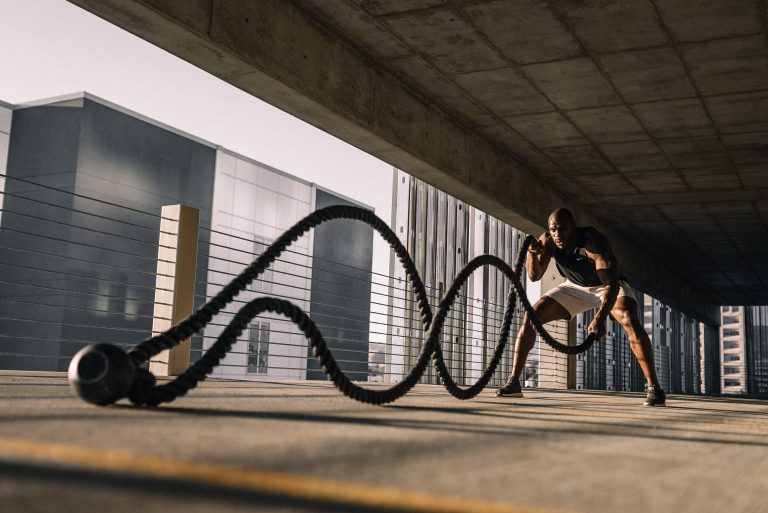Is Karate Bad for Your Joints?
Karate is a popular martial art that requires the use of various techniques, including striking, kicking, and punching. While karate has many benefits, some people have concerns that it may be bad for the joints. In this blog post, we will examine whether karate is bad for your joints, and what you can do to minimize any risk.
Understanding the Anatomy of Joints
Before we dive into whether karate is good or bad for your joints, let’s first understand what joints are and how they work. Joints are the connections between two or more bones in the body. They provide support, stability, and help facilitate movement.
Joints consist of several components, including:
- Cartilage: A tough, flexible tissue that covers the ends of bones and provides cushioning between them.
- Synovial fluid: A clear liquid that lubricates the joint.
- Ligaments: Tough bands of tissue that connect bones to each other and provide stability.
- Tendons: Connective tissue that attaches muscles to bones.
Now that we understand the basics of joint anatomy, let’s explore whether karate can have negative impacts on the joints.
The Potential Risks of Karate on Joints
Karate, like any physical activity, can put stress on the joints. However, this doesn’t necessarily mean that karate is bad for your joints. In fact, some researchers have suggested that karate may actually have some benefits for joint health.
That being said, there are some potential risks associated with karate. For example:
- Impact and trauma: Karate involves a lot of striking and kicking, which can put pressure on the joints and cause trauma.
- Overuse injuries: Repetitive motions, such as punching or kicking, can cause overuse injuries like tendonitis or bursitis.
- Incorrect form: Poor technique can put unnecessary stress on the joints and lead to injuries.
- Pre-existing conditions: People with pre-existing joint conditions, such as arthritis, may be at a higher risk of injury.
How to Minimize the Risk of Joint Injury in Karate
While karate does have some potential risks to the joints, there are many ways to minimize these risks and enjoy the benefits of this martial art. Here are some strategies you can use to protect your joints during karate training:
- Warm-up and cool down properly: Before you begin any karate training session, make sure to warm up your body with stretching and light exercises. After your training, cool down and stretch again to help prevent injury.
- Use proper technique: Learn the correct form for each karate technique to minimize the risk of joint injury.
- Wear protective gear: Wearing proper protective gear, such as gloves or shin guards, can help prevent joint trauma during sparring.
- Take rest days: Allow your body time to recover in between training sessions to prevent overuse injuries.
- Listen to your body: If you experience pain or discomfort during training, stop and rest. Pushing through the pain can lead to serious injury.
- Consult a doctor: If you have a pre-existing joint condition or are unsure if karate is safe for you, consult your doctor before beginning training.
The Bottom Line
While karate can put stress on the joints, it is not necessarily bad for them. By using proper technique, wearing protective gear, and taking rest days, you can safely enjoy the many benefits of this martial art. However, if you have pre-existing joint conditions or concerns about the impact of karate on your joints, it’s always a good idea to consult with a doctor before beginning training.
Is Karate Bad for Your Joints? Frequently Asked Questions
Karate is a popular form of martial arts that involves a lot of kicking, striking, and joint manipulation techniques. Many people are curious to know whether it can be harmful to their joints or not. In this blog post, we will look at some frequently asked questions about how karate can affect your joints and whether it’s bad for them or not.
1. What are the common joint injuries in karate?
Karate involves many rapid, powerful movements that can put pressure on your joints. Common joint injuries associated with karate include tendonitis, sprains, and strains, especially in the ankles, knees, elbows, and wrists. Overuse of joints can also lead to arthritis or other chronic conditions. However, these injuries can be reduced with proper training and precautions.
2. Can karate cause long-term joint damage?
Karate can cause long-term joint damage, but it’s generally uncommon. Many martial arts practitioners have been practicing for years without suffering any significant joint damage. However, if you have previous joint injuries or illnesses or do not take proper safety measures while training, there’s a higher risk of long-term joint damage.
3. Can I practice karate if I have joint problems?
If you have joint problems, it’s important to consult your doctor before trying any new physical activity, including karate. You can also discuss your condition with your karate instructor, who can help you modify the movements to minimize the impact on your joints. If the pain is persistent, you should stop and allow proper healing before continuing.
4. Can stretching exercises minimize the risk of joint injury in karate?
Stretching exercises won’t eliminate the risk of joint injuries but can significantly reduce it. Regular stretching exercises help develop flexibility, strength, and endurance, which can help prevent joint injuries. Proper warm-up and cool-down techniques should be a part of your karate routine to minimize the risk of joint injuries.
5. How can I protect my joints while practicing karate?
You can protect your joints while practicing karate in several ways:
- Wear proper protective gear such as braces, padding, and gloves to minimize the impact on your joints.
- Make sure the training surface is safe and has proper padding.
- Avoid overtraining and always give your joints enough rest and recovery time.
- Listen to your body and do not push yourself beyond your limits.
6. Can a good instructor minimize the risk of joint injury?
Yes, a good instructor can minimize the risk of joint injury by ensuring that students learn proper techniques and precautions. An experienced instructor should emphasize injury prevention and help students develop proper form, strength, and balance. A good instructor should also be aware of students‘ individual limitations and provide modifications as needed.
Is Karate Bad for Your Joints?
Karate is an ancient martial art that is still popular today. However, some people are concerned about the effects of practicing karate on their joints. In this article, we will explore this question in detail and provide you with some practical steps you can take to protect your joints while practicing karate.
Understanding Karate
Karate is a physical activity that involves intense movements, strikes, kicks, and blocks. It is a form of martial arts that dates back hundreds of years and is practiced by people of all ages around the world. Karate requires a high level of focus, dedication, and physical ability, which can lead to injuries if not practiced correctly.
The Impact of Karate on Your Joints
Karate involves a lot of movements that can put excessive strain on your joints if done incorrectly. High kicks, heavy punches, and sudden movements can all lead to joint pain and injury if not appropriately executed. However, when done correctly, karate can actually benefit your joints by improving your flexibility, balance, and muscle strength.
Common Joint Injuries in Karate
Some of the most common joint injuries that can result from karate include:
– Sprains: A sprain occurs when the ligaments that connect bones are stretched or torn, usually due to sudden movements or twisting. In karate, this can happen if you overextend your knee or ankle.
– Strains: A strain occurs when a muscle or tendon is stretched or torn, usually due to overuse. In karate, this can happen if you repeatedly use the same muscle group without proper rest.
– Dislocations: A dislocation occurs when one or more bones are forced out of position, causing pain and instability. In karate, this can happen if you receive a hard blow to a joint.
Reducing Your Risk of Joint Injuries in Karate
While karate does involve some risks to your joints, there are many steps you can take to reduce your risk of injury:
– Warm-up: Before starting any karate practice, warm up your muscles and joints with some light exercises. This will help prevent strains and sprains.
– Stretching: Incorporate regular stretching into your karate practice to improve your flexibility and reduce your risk of joint injuries.
– Proper Technique: Make sure you have proper technique for each movement in karate. This will reduce the risk of joint pain and injuries.
– Safety Gear: Always wear appropriate safety gear, such as shin guards or gloves, when practicing karate to reduce the risk of injuries.
– Rest and Recovery: Take regular breaks between karate training sessions to give your body time to rest and recover.
– Professional Instruction: Seek out professional instruction from a qualified karate instructor who can teach you how to perform each movement correctly and safely.
Conclusion
In conclusion, karate can be both beneficial and risky to your joints depending on how you perform it. There are certain steps you can take to reduce the risk of joint injuries, including proper technique, safety gear, and rest and recovery. With proper precautions and safety measures, you can enjoy the many benefits of karate without putting your joints at risk.
Inhaltsverzeichnis






